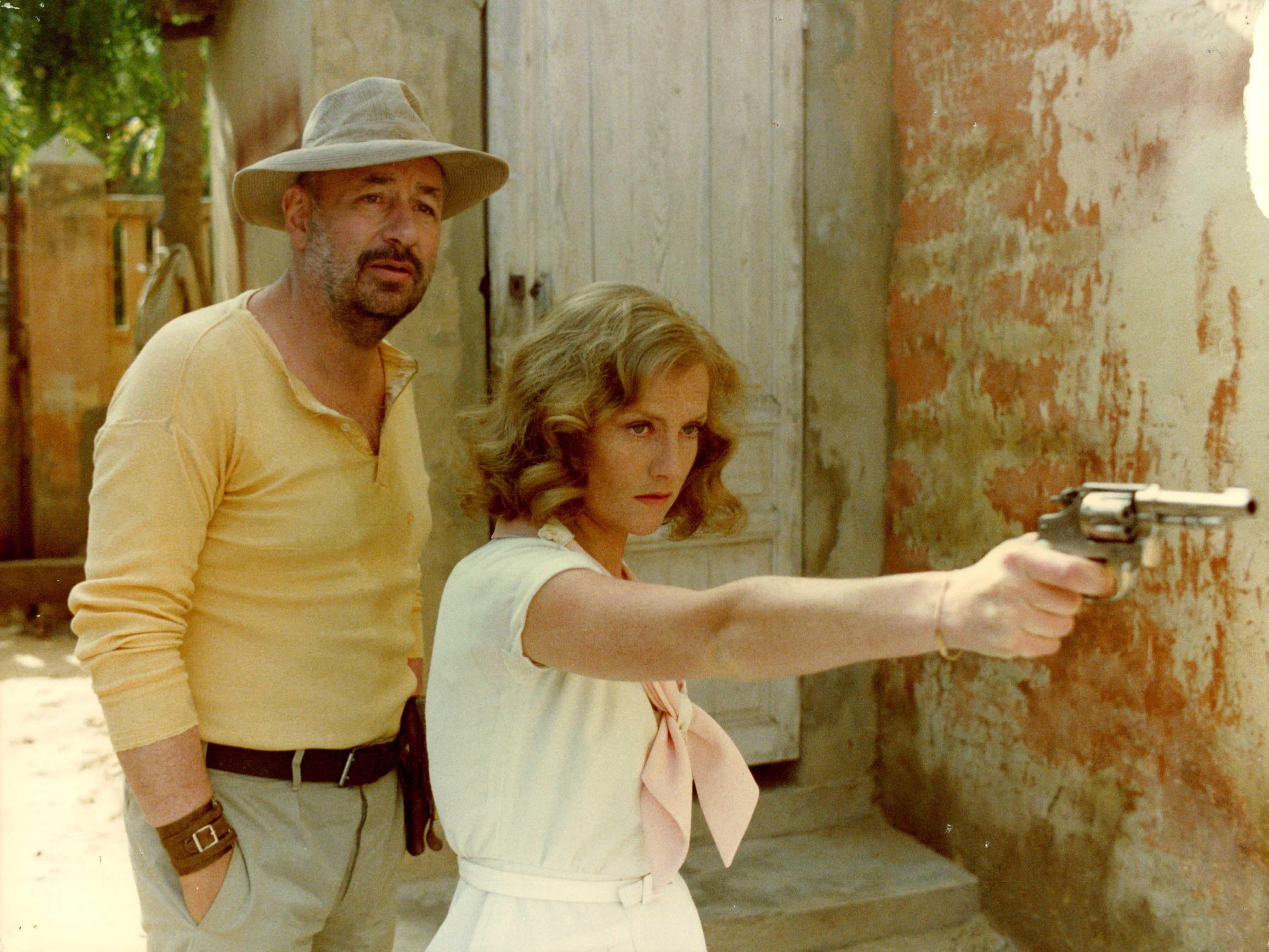
Jim Thompson’s comic pulp novel Pop. 1280 is transposed from the sleepy South to listless Bourkassa, a French colony in tropical West Africa in 1938, as imagined by famed production designer Alexandre Trauner. Bertrand Tavernier preserves Thompson’s caustic observations on race and delights in his narrative in which henpecked “sheriff” Philippe Noiret becomes as lethal as his abominable citizens.
Lucien Cordier: We all kill what we love.
“In Coup de torchon, I had the pleasure of working with a Steadicam. (...) [Together with cinematographer Pierre William Glenn,] I adopted this approach because it immediately provided the maximum distance from the films I was referring to directly: the French colonial films of the thirties. They were entirely based on the use of symmetry and the diagonal axis; every shot had a very clear center. (...) What interested me with the Steadicam was precisely that there's no center, that it communicates to the viewer this sense of floating. (...) What's more the Steadicam helped to recreate the world of Jim Thompson, where you never feel like you're on solid ground, but always in a minefield.”
Bertrand Tavernier1
« Il m’a passé La règle du jeu (Jean Renoir, 1939) sur son magnétoscope en soulignant ses mouvements d’appareil, qui, comme par hasard, après avoir glissé sur un paysage sans évidente signification arrivent sur un acteur qui prend, comme par hasard, une grosseur, une importance signifiante dans l’image... Il a ajouté : ‘Ça se passe en Afrique, ça ne doit pas être décoratif (nous n’avons pas utilisé le format scope pour cette raison), ça doit être inattendu, bizarre, inquiétant et surtout pas conventionnel.’ »
Pierre William Glenn2
“Daar waar Kubrick met de Steadicam strenge geometrische bewegingen uitvoerde die pasten bij de labyrinth-structuur van de film en de acteurs in zeer enge banen dwongen, gebruikt Tavernier dit toverinstrument om ruimte te geven aan zijn acteurs, die alle richtingen uit kunnen zonder dat dit voor de camera problemen stelt. Waardoor Coup de torchon niet alleen een verbazende zwartgallige komedie is vol verontwaardiging, boosheid en opstandige gevoelens, maar ook een grote les in ongedwongen mise-en-scène in de geest van Jean Renoir, maar met de mogelijkheden waar de huidige filmtechniek over beschikt.”
Patrick Duynslaegher3
- 1Michel Ciment, Jean-Pierre Jeancolas, Isabelle Jordan & Paul-Louis Thirard, “Conversation with Bertrand Tavernier,” In Lynn A. Higgins & T. Jefferson Kline (eds.) Bertrand Tavernier: Interviews (Jackson: University Press of Mississippi, 2016). Originally published in Positif, 279 (1984). Translated by T. Jefferson Kline.
- 2Original press kit of the film, 1981.
- 3Patrick Duynslaegher, “Schoonmaak in koloniaal Afrika: Zwarte komedie van Tavernier,” Knack, 25 november 1981, 208.

